FROM THE LAB: TECHNICAL BREIF SERIES
PART II: WHY WIPE? A COMBINED DECON APPROACH
By Dr. Ramkumar, Professor, Advanced Materials Laboratory, Texas Tech University. September 2017. EDIT.
The Need for Dry Decon
First responders face a wide range of chemical threats, including chemical warfare agents and toxic industrial chemicals. To deal with this largely unknown threat, responders require a flexible, inexpensive, and broad spectrum protective fabric system.
An effective and universal dry decontaminant capable of removing bulk contamination from personnel and sensitive equipment needs to be non-corrosive and devoid of particles such as with the case of the M-291 kit.
Wet vs Dry Decon
Although there are a range of aqueous decontaminants, they do not have a broad range of action as they are very specific to subsets of nerve agents and toxic industrial chemicals.
Additionally, liquid based chemical decontamination technologies may be corrosive to sensitive equipment and human skin.
Therefore, there is an immediate need to develop a “system approach”, which will tackle the shortfall with standalone technologies. This concept has been advocated by Lawrence Livermore National Laboratory 1.
Having a wiping technology as part of the decontamination system offers several advantages such as avoiding the excessive use of chemical decontaminants and offering cost savings.
FiberTect
FiberTect is a three-layer, inert, flexible, non-woven composite substrate for absorbing and adsorbing chemical warfare agents, toxic industrial chemicals, toxic industrial materials, and pesticides.
FiberTect technology, developed by First Line Technology, feeds exactly to the immediate needs of the US Defense and Homeland Security community.
The FiberTect decontamination wipe can serve as a standalone technology or used effectively as an integral component of a decontamination system. This can be used on personnel and sensitive defense equipment and can be handled very easily with regards to use and disposal.
FiberTect is created using a unique needle-punching non-woven method and a combination of highly absorptive outer layers and an inner layer made of carbon to trap toxic vapors and liquids.
FiberTect keeps life-cycle costs low and is self-contained and packaged for easy use, storage, and transport.




